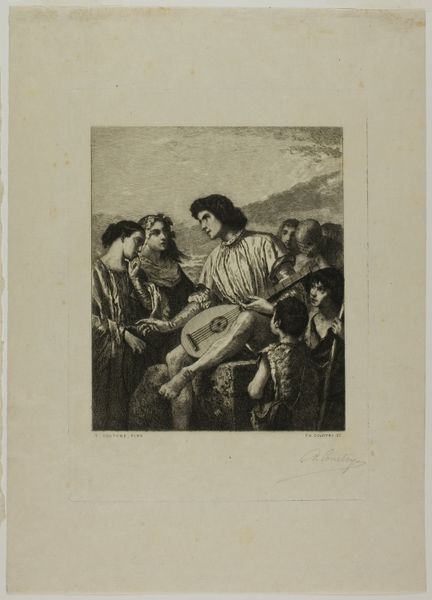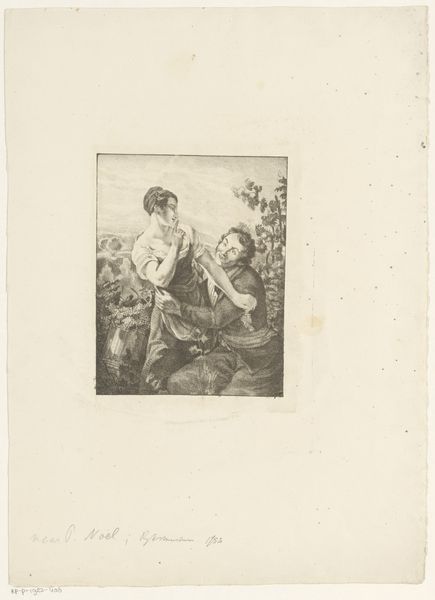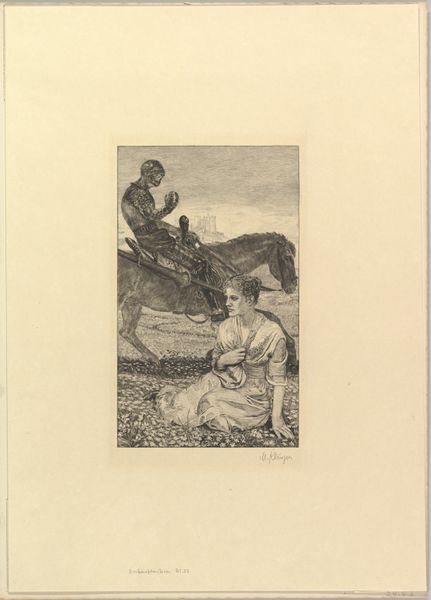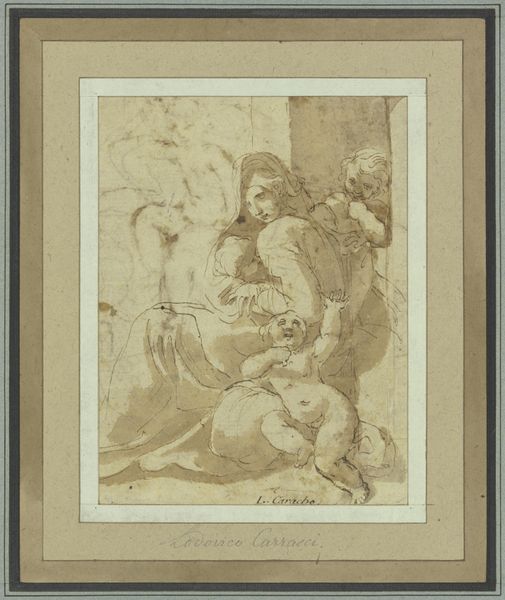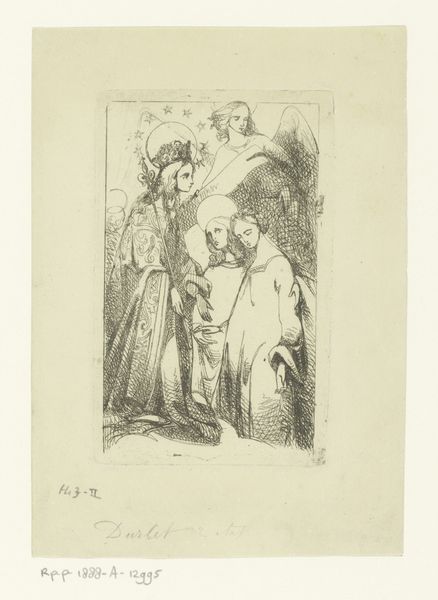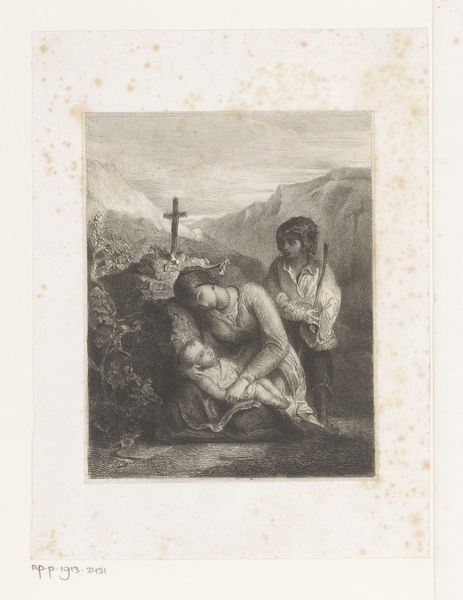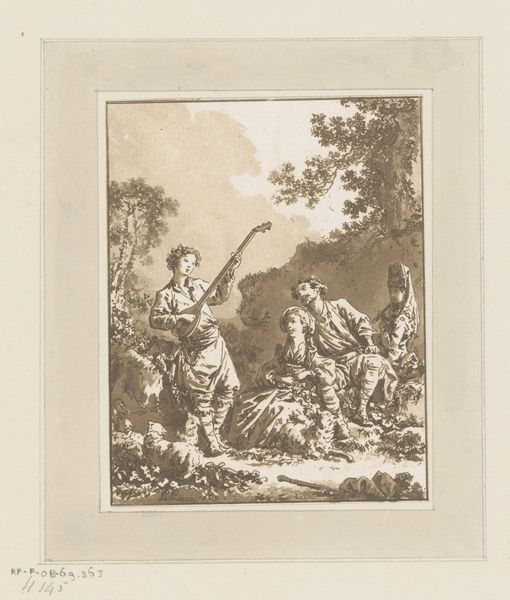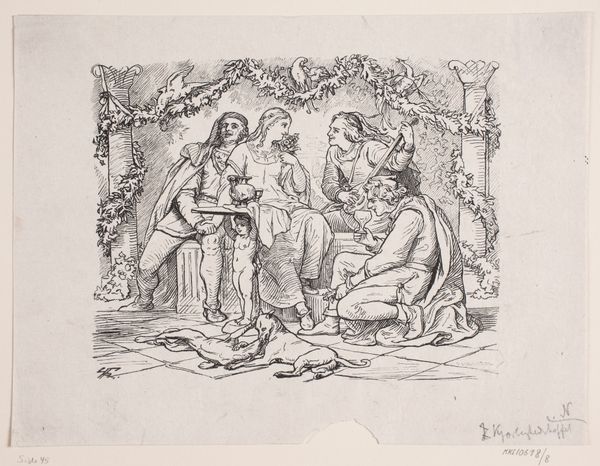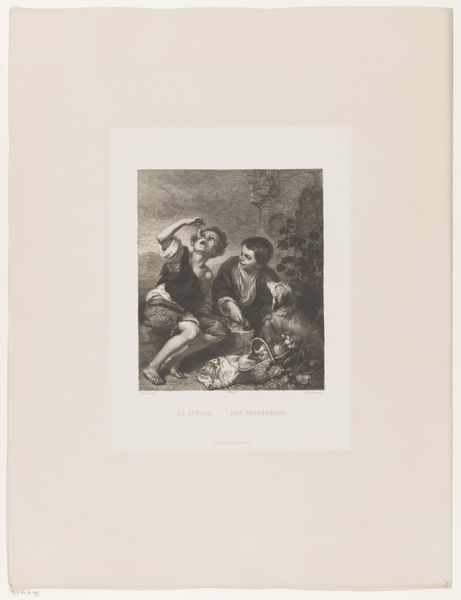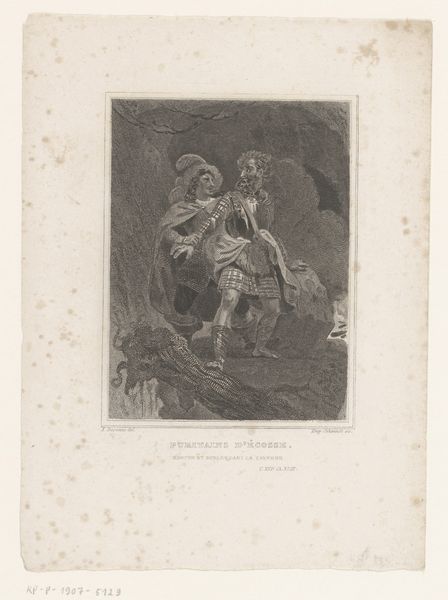
Dimensions: 168 × 142 mm (image); 227 × 168 mm (plate); 285 × 223 mm (sheet)
Copyright: Public Domain
Curator: Ah, this piece exudes such quiet melancholy! What a world of emotion is captured in shades of sepia. Editor: Indeed. What you are observing is "The Minstrel," an 1873 etching by Charles Louis de Courtay, currently residing here at The Art Institute of Chicago. Its primary composition includes line, form, and the considered use of negative space to imply shape, but it appears like an almost-blurred fresco. Curator: A minstrel, caught mid-performance, surrounded by onlookers. I imagine him sharing tales of knights and dragons or perhaps even the pangs of unrequited love. And these are probably those swooning women so typical to see at the troubadour concerts. All the same! the energy feels dreamlike... Editor: Notice how Courtay uses varying densities of hatching and cross-hatching to render the figures. Look closely; some faces emerge from shadow more distinctly than others, a deliberate tactic to suggest spatial depth using tone instead of linear perspective. In semiotic terms, it invokes Romanticist themes without obvious cultural cliches like landscapes of ruins. Curator: But beyond technicalities, look how light glints on his lute, drawing you into his world of song! He isn't smiling. Are those happy memories he is playing with such nostalgia, or does it hide something sinister? Or perhaps the girls are simply mesmerized by that instrument that surely looks like the finest lute in all the kingdoms around it. Editor: Observe too the relationship between line and light in articulating musculature. De Courtay does not seek photographic realism; rather, he employs loose contouring to give the impression of idealized masculine vigor contrasted against soft female features around the character. What appears soft still relies upon very structural form work. Curator: It certainly gives voice to hidden emotion, though, don't you agree? It is hard to be too stern and clinical about this romantic scene from another time. Editor: Fair enough! From a formal view or from the narrative one you may see, this drawing proves how artwork creates enduring connections throughout the centuries. Curator: Exactly! Next drawing, please! I wonder what secrets they reveal...
Comments
No comments
Be the first to comment and join the conversation on the ultimate creative platform.
